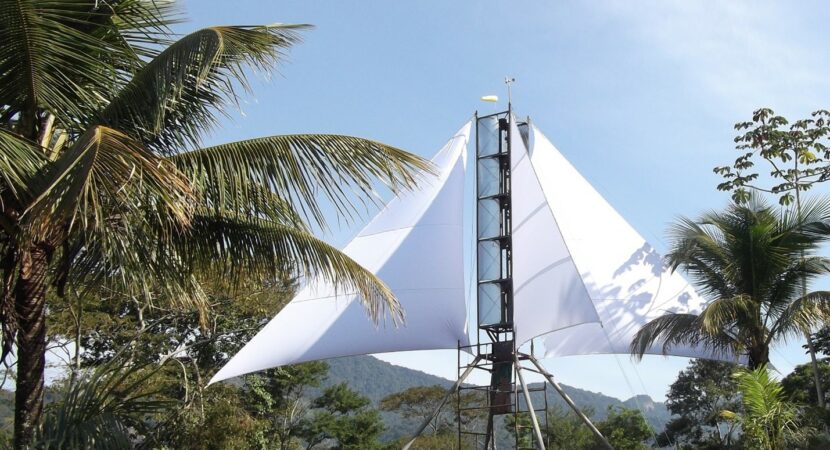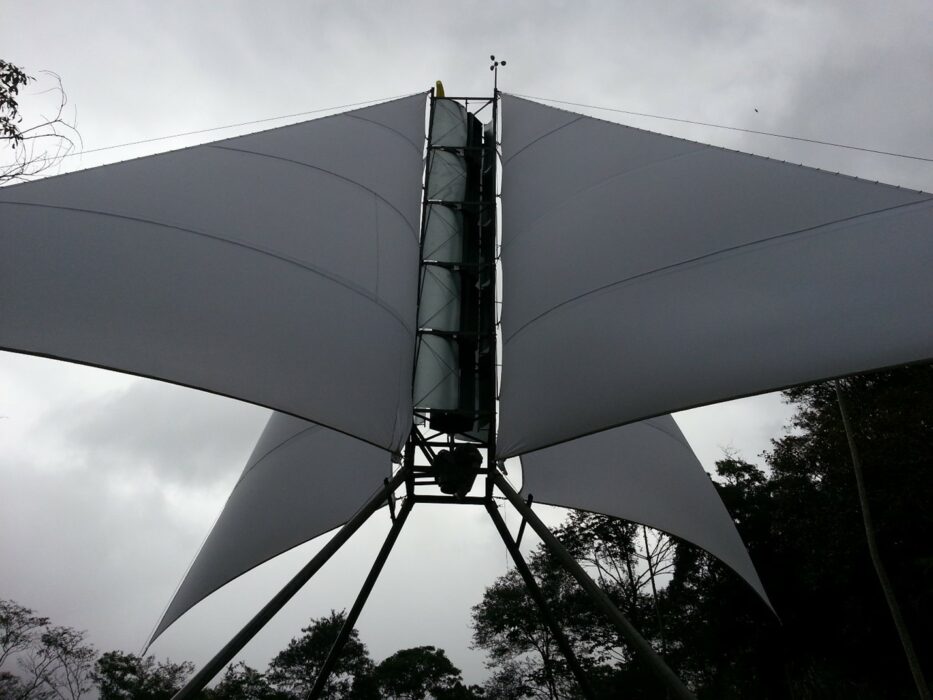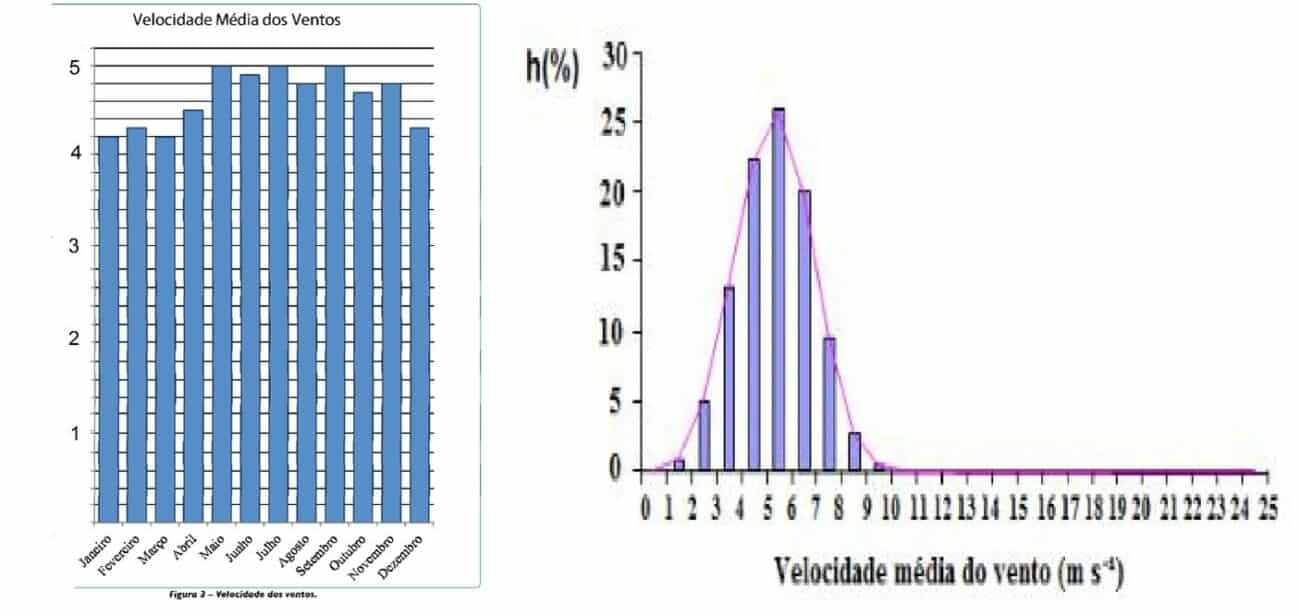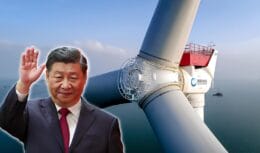
Urban Wind with wind concentrating sails make self-producer micro-farm possible
Cubo de Vento is a disruptive innovation from wind power generation, “zero impact”, totally recyclable, friendly with the fauna and flora and installs in 6 hours – it comes in a telescopic tower, just erect and cable. It is literally possible to have a wind farm of high capacity in very reduced areas with this type of wind turbine.
- Government of Rio Grande do Norte presents proposal for application of the EIA-RIMA to wind power plants with more than 150 MW
- New technologies from renewable sources has a 23-meter generator that produces wind energy for 24 hours
- Billionaire investment in the Northeast: 2W Energia receives authorization from Aneel to start construction work on plants and explore wind energy generation in Ceará
- Seven new wind power plants will be built and more than 1200 jobs will be generated in Bahia after financing from BNDES
The bucolic image of nautical sails in a field of grass, referring to the most sustainable and historically most impressive means of transport – the sailing boat – has a very strong media appeal, and a campaign that explores the image of Cubo de Vento can have repercussions worldwide.
Wind Cube Operation Video
The wind can come from any direction as it uses 4 X-shaped sails that concentrate the wind at the apex, where a wind turbine rotor rotates at high speed, eliminating the multiplication box, completely enclosed in a cable-stayed tower, which prevents the projection of parts, being the safest wind energy turbine in the world.
In certain areas of Brazil the wind blows 80% of the time, one of the most constant in the world, but they are weak. Wind energy is a cubic function of speed – a 3 m/s wind has 8 times less energy per area than a 6 m/s wind.
There was a lack of a turbine with adequate technology for the Brazilian regime, since in the rest of the world turbines for 10 m/s are used, which do not work here, because only on the coast of NE and at 100 m height we have winds with that speed.
The Wind Cube, with its gigantic area of sails, brilliantly solved this problem, capturing and concentrating light winds, protecting the tower with disconnectors that release the tip of the sail in case of gales, allowing it to withstand “feathered” typhoons of 120 km/h.

Awarded at an Innovation hub by SABESP, the second largest consumer of electricity in SP, Cubo de Vento competes directly with photovoltaics, and has a key advantage: photovoltaic only produces energy when there is sunlight, and only if the weather is not cloudy for satisfactory production.
The Wind Cube always generates, be it day, night, with rain, with thunderstorms and with “Martian invasion or World Cup defeat”.
According to the website Power Bay, the most efficient wind farm was Testa Branca I, in Piauí with FC (Capacity Factor) by 81,31%, owned by Omega Energia.
O photovoltaic park most efficient was the Pereira Barreto I with CF of 34,44%, in SP, by EDP Renováveis, the 5th largest in the world, with a team of specialists permanently maintaining maximum productivity, with adjustments, washing and replacement of panels. With 250.000 kW, it employed 1500 people in its construction.
If the FC of gigantic centralized photovoltaics is already low, in small distributed installations the thing gets worse radically, with micro producers producing less than 20% in some cases. A portion of solar installations below 400 kW.h will not even pay for itself over its useful life.

In areas of the breeze regime, the annual wind variation is much smaller than that of solar energy between summer and winter, ensuring more stable production.
And the asynchronous induction generator is famous for its sturdiness, the tower is hot-dip galvanized and the stays guarantee stability in any situation, allowing for an expectation of 20 years of trouble-free operation.
Cubo de Vento, in areas with favorable wind, pays for itself in 2 years, supported by 4 times greater productivity, in less maintenance and in the smallest space occupied, efficiently protecting the investment through the leasing of the turbines with guarantee of production by performance contract.
The entire Lagos Region up to the coast of Espirito Santo, points in Serra da Mantiqueira and much of the interior of SP, peaks in the interior of MG, and some tall buildings, has enough wind to make the installation of a Wind Cube feasible.
Considering only the SE region, the richest and with the largest number of captive consumers who pay the highest tariff (main customer), we have a potential of 5 billion honest Reais in 10 years.
On a national scale, a skilled entrepreneur (since no investment is needed, just skill) can easily double this amount.
And the rest of the world, with similar winds, could be a new Eldorado.
Source: Marco Sombra, Academic and Inventor of the Brazilian energy and sustainability area












